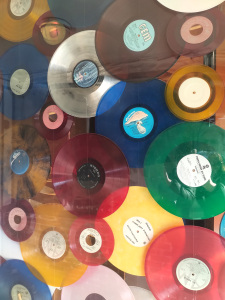Here is a link to this week’s blog post on the resurgent popularity of vinyl, one of the mediums to deliver the music that we all need during this era of COVID in order to stay sane. But vinyl, while popular with many for reasons that I discuss, has a large carbon footprint. What to do? Read on.
For those of us staying at home these days, music has become a Godsend. If you want to avoid the daily COVID count on TV or radio, music is a great escape. Most will turn to various streaming services, but one group of aficionados will be getting out the record jackets and dusting off the turntable. Yes, you may have heard the news. Vinyl is back and on a roll.
Rolling Stone reports that vinyl is expected to outsell CDs (in revenue terms) for the first time since the mid-1980s. In part this is because CD sales are flat, while interest in vinyl is growing, although sales of music on any physical medium are small in comparison to the revenues generated through streaming. CDs still outsell vinyl on a unit basis by about 2:1, but there will always be those who love records. And then there is the argument that sales of vinyl are actually much larger than reported because the figures don’t consider sales of used records, and many indie record stores don’t bother to report sales of new vinyl discs. Whatever the numbers, they are not insignificant, and they are growing. What is it about vinyl discs that continues to attract consumers, and who are these consumers?
